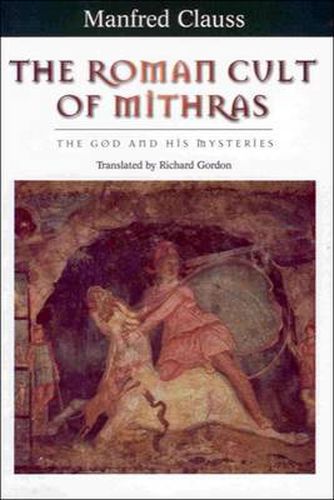Readings Newsletter
Become a Readings Member to make your shopping experience even easier.
Sign in or sign up for free!
You’re not far away from qualifying for FREE standard shipping within Australia
You’ve qualified for FREE standard shipping within Australia
The cart is loading…






The mystery cult of Mithras became evident in Rome towards the end of the first century AD. During the next two centuries, carried by its soldier and merchant devotees, it spread tot he frontier of the western empire from Britain to Bosnia. Perhaps because of odd similarities between the cult and their own religion the early Christians energetically suppressed it, frequently constructing churches over the caves (Milthraea) in which its rituals took place. By the end of the fourth century the cult was extinct. Professor Clauss draws on the archaeological evidence from over 400 temples and their contents - including over a 1000 representations of ritual in sculpture and painting - to seek an understanding of the nature and purpose of the cult, and what its mysteries and secret rites of initiation and sacrifice meant to its devotees. In doing so he introduces the reader to the nature of the polytheistic societies of the Roman Empire, in which relations and distinctions between gods and mortals now seem strangely close and blurred. He also considers the connections of Mithraicism with astrology, and examines how far it can be seen as a direct descendant of the ancient cult of Mitra, the Persian god of contract, cattle and light.
$9.00 standard shipping within Australia
FREE standard shipping within Australia for orders over $100.00
Express & International shipping calculated at checkout
The mystery cult of Mithras became evident in Rome towards the end of the first century AD. During the next two centuries, carried by its soldier and merchant devotees, it spread tot he frontier of the western empire from Britain to Bosnia. Perhaps because of odd similarities between the cult and their own religion the early Christians energetically suppressed it, frequently constructing churches over the caves (Milthraea) in which its rituals took place. By the end of the fourth century the cult was extinct. Professor Clauss draws on the archaeological evidence from over 400 temples and their contents - including over a 1000 representations of ritual in sculpture and painting - to seek an understanding of the nature and purpose of the cult, and what its mysteries and secret rites of initiation and sacrifice meant to its devotees. In doing so he introduces the reader to the nature of the polytheistic societies of the Roman Empire, in which relations and distinctions between gods and mortals now seem strangely close and blurred. He also considers the connections of Mithraicism with astrology, and examines how far it can be seen as a direct descendant of the ancient cult of Mitra, the Persian god of contract, cattle and light.